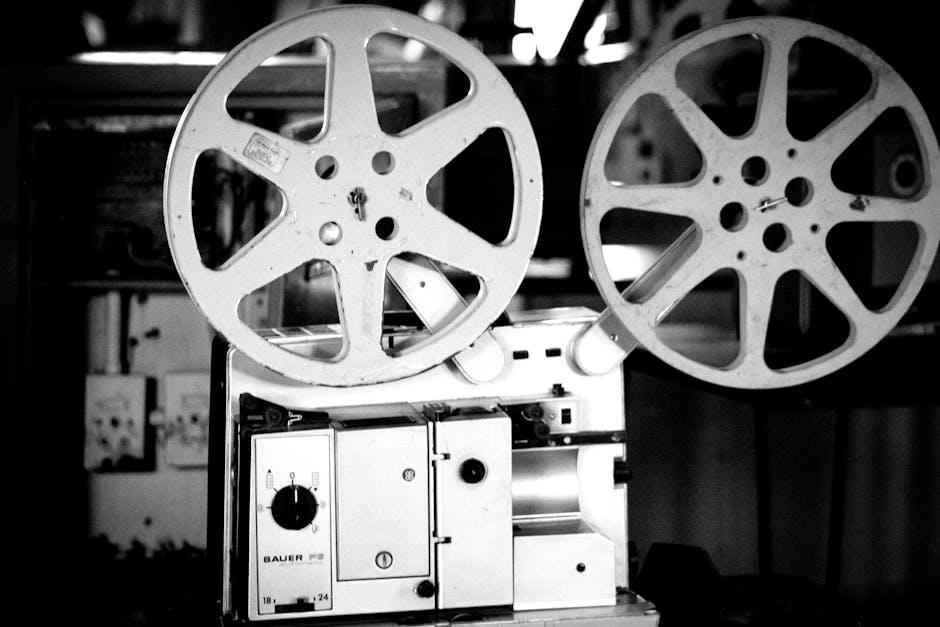In the vast tapestry of cinema, certain films stand as timeless pillars, shaping the very landscape of storytelling and influencing generations of filmmakers and audiences alike. These classic masterpieces transcend mere entertainment; they are cultural touchstones that echo through the corridors of history, offering profound insights into the human condition. As the flicker of the silver screen beckons, we embark on a journey through five quintessential films that everyone should experience at least once. Each selection is a testament to the power of cinema to inspire, provoke, and endure, inviting us to explore the depths of imagination and the breadth of human emotion. Whether you are a seasoned cinephile or a curious newcomer, these films promise to leave an indelible mark on your cinematic soul, reminding us all of the timeless magic that only the world of film can conjure.
Timeless Storytelling Masterpieces
In the world of cinema, certain films transcend time, leaving an indelible mark on the tapestry of storytelling. These masterpieces are not just movies; they are cultural landmarks that have shaped the very essence of filmmaking. To truly appreciate the art of cinema, one must explore these quintessential works, each a beacon of creativity and narrative brilliance.
- “Casablanca“: A tale of love and sacrifice set against the backdrop of World War II, this film is renowned for its unforgettable lines and iconic performances.
- “Citizen Kane“: Often heralded as the greatest film ever made, its innovative storytelling and deep character study continue to influence filmmakers worldwide.
- “The Godfather”: A powerful saga of crime and family loyalty, this epic redefined the gangster genre with its rich storytelling and complex characters.
- “Lawrence of Arabia”: Known for its stunning cinematography and epic scale, this film explores the complexities of heroism and imperialism.
- “Gone with the Wind”: A sweeping romance set during the American Civil War, its grandeur and dramatic depth make it a timeless classic.
Each of these films offers a unique glimpse into the human condition, showcasing the power of storytelling through compelling narratives and unforgettable visuals. They are not just to be watched but experienced, offering insights that remain relevant across generations.

Iconic Performances That Define Cinema
In the tapestry of cinematic history, certain performances stand out, capturing the essence of human experience and artistic brilliance. These portrayals are not just memorable; they are transformative, shaping the landscape of film and leaving an indelible mark on audiences worldwide. Here, we delve into the heart of such performances, celebrating the actors who brought their characters to life with unrivaled passion and skill.
- Marlon Brando in “The Godfather”: A masterclass in subtlety and power, Brando’s portrayal of Don Vito Corleone is a benchmark for method acting, blending authority with vulnerability.
- Vivien Leigh in “Gone with the Wind”: With her mesmerizing presence, Leigh’s Scarlett O’Hara remains a defining character in cinema, embodying resilience and complexity.
- Heath Ledger in “The Dark Knight”: Ledger’s Joker is an embodiment of chaos and brilliance, a role that transcends the superhero genre and redefines villainy.
- Meryl Streep in “Sophie’s Choice”: Streep’s performance is a poignant exploration of trauma and survival, demonstrating her unparalleled range and depth.
- Al Pacino in “Scarface”: Pacino’s Tony Montana is a relentless force, a portrayal of ambition and madness that remains iconic in the annals of film.
Visual Brilliance in Cinematic History
In the world of cinema, visual storytelling is as crucial as the narrative itself. Certain films have mastered the art of visual brilliance, creating frames that are etched in our memories forever. These masterpieces use color, composition, and lighting not just as decorative elements but as integral parts of the storytelling process. Witness the transformative power of film through these classics that have set benchmarks in visual aesthetics.
- “Lawrence of Arabia” (1962) – An epic that captures the grandeur of the desert, with vast landscapes that feel as infinite as the story itself.
- “Blade Runner” (1982) – A dystopian vision brought to life through neon-lit cityscapes and rain-soaked streets, blending the lines between the future and noir.
- “2001: A Space Odyssey” (1968) – A visual symphony that takes viewers on a cosmic journey, redefining how space is portrayed on screen.
- “The Grand Budapest Hotel” (2014) – A whimsical palette of pastels and meticulously crafted symmetry, offering a visual feast in every scene.
- “In the Mood for Love” (2000) – A masterclass in mood and atmosphere, where every shot is a painting, drenched in rich, evocative colors.
These films are not just to be watched but experienced, as they continue to influence filmmakers and captivate audiences with their unparalleled visual artistry.

Enduring Influence on Modern Filmmaking
While each classic film on this list holds its own unique charm, their collective influence on modern filmmaking is undeniably profound. These cinematic masterpieces have shaped the very fabric of contemporary storytelling, leaving an indelible mark on directors, screenwriters, and cinematographers alike. From innovative camera techniques to pioneering narrative structures, the echoes of these films can be felt in countless modern productions. Consider the following elements that have transcended time:
- Revolutionary Storytelling: Many classic films broke new ground with their narrative styles, introducing non-linear storytelling, unreliable narrators, and complex character arcs that continue to inspire today’s screenwriters.
- Technical Innovation: From groundbreaking special effects to inventive use of lighting and sound, these films have set a benchmark for technical excellence, pushing filmmakers to explore new frontiers.
- Iconic Imagery: The visual aesthetics of classic films have become a blueprint for modern cinematography, with iconic scenes and compositions that are often referenced and reimagined.
By revisiting these timeless works, contemporary filmmakers gain a deeper understanding of the art form’s evolution, ensuring that the legacy of these classics endures in the ever-changing landscape of cinema.




